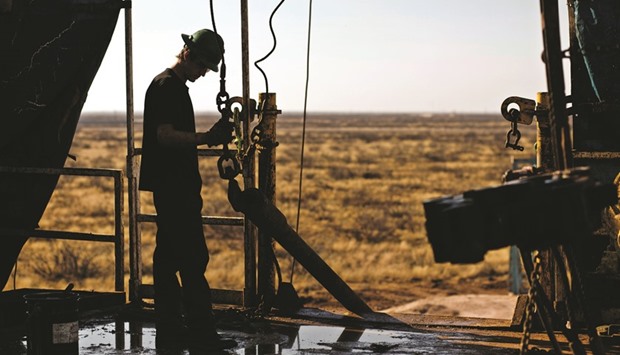Oil explorers added more rigs in the US in a sign of persistent optimism that the market will move toward higher prices in the coming year.
Rigs targeting crude in the US rose by 2 to 416, extending the biggest drilling reboot since crude prices first began falling two years ago. Producers haven’t pulled back activity since the end of June. The tally generally reflects decisions made several months ago to activate or shut down rigs. Oil prices dropped to $39.51 on August 2 and have since recovered.
“This is a $40-per-barrel rig count, not a $45 a barrel rig count,” James Williams, president of WTRG Economics in London, Arkansas, said in a phone interview. “Last week we thought we had a substantial increase and we didn’t. They were just hauling the drilling rigs back into the Gulf.”
Natural gas rigs fell by 3 to 89 this week, and miscellaneous rigs were down 1 to 1, bringing the total for oil and gas down by 2 to 506.
The biggest energy crash in a generation prompted the industry to cut $1tn in spending. That’s resulted in less new production and the slowing of current output as firms scrimp on technology that lengthens the life of fields. Citigroup sees prices rising to $65 next year.
“The move from $50 to $60 to $70 a barrel could be a lot quicker than people think,” David Fyfe, Gunvor’s head of market research and analysis, said in an interview in Singapore. “Everyone in the supply universe apart from Saudi Arabia is, over the short term, producing as much as they can.”
Prices rose this year partly on speculation that informal discussions among members of the Organisation of Petroleum Exporting Countries may lead to action to stabilise the market. Investors continue to parse statements from Opec members and Russia for signs of whether they’ll agree on measures that would limit production.
The oil price recovery from a 12-year-low in February has prompted producers to begin returning parked rigs to service after idling more than 1,000 rigs since the start of last year.
The surplus in global oil markets is now expected to persist into late 2017 as demand growth slumps and supply proves resilient, the International Energy Agency said on Tuesday. As recently as last month, the agency forecast a re-balancing this year.

A worker waits to connect a drill bit on a rig in the Permian basin outside of Midland, Texas, US (file). Rigs targeting crude in the US rose by 2 to 416, extending the biggest reboot since crude prices first began falling two years ago.
